The Green Climate Fund is the first and currently the largest international multilateral climate fund, with a target of USD 100 billion per year by 2020 to support developing countries affected by climate change.
―
Q. What is the Green Climate Fund?
―
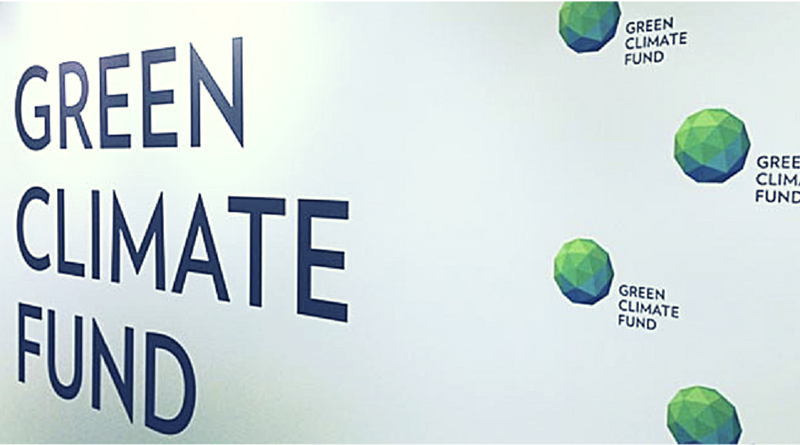
(Source : Green Climate Fund)
A. The Green Climate Fund is the first international financial fund dedicated to climate change, with a target of USD 100 billion per year until 2020 to support developing countries affected by climate change.
The decision to establish the Green Climate Fund (GCF) was made in December 2010 during the UN Framework Convention on Climate Change (UNFCC) held in Cancun, Mexico. In December 2013, its headquarters was officially launched in Songdo, Republic of Korea. The GCF allocates funds to projects that helps to reduce greenhouse gas emissions or increase the ability of developing countries to adapt to climate change.
Since the signing of the Paris Agreement in 2015, the GCF serves in the same function for the Agreement, focusing on the goal of keeping the global temperature increase to well below 2 degrees Celsius above pre-industrial levels.
However, not all countries have the money to meet their low carbon emission targets, so countries that can afford it need to help finance less developed countries. This is why the Green Climate Fund was established, and is often referred to as the "second World Bank" because it allocates funds primarily to less developed countries.
―
Q. What is the scale of support?
―
A. The Green Climate Fund is a multilateral financing mechanism that operates in partnership with a wide range of countries and institutions. The size and target amount of the Fund is very large, at $800 billion, which is comparable to the International Monetary Fund's (IMF) $845 billion.
Developed countries, including the Group of Seven (G7), provided $30 billion in emergency financing from 2010-2012, and have pledged to provide at least $100 billion in climate funding annually through 2020.
However, promises have not been kept: according to the OECD Economic Outlook 2021, only about $80 billion had been provided to developing countries as of 2019.
This has led to conflicts over funding. With the goal of $100 billion per year by 2020, developing countries are claiming "$100 billion per year" while developed countries are countering with "$100 billion per year on average" starting in 2020.
―
Q. How does the GFC work?
―
A. As of 2022, the Green Climate Fund has an operating budget of about $42.8 billion. The Board of Directors meets every three to four months and decides how the funds will be used.
The organization's board is equally divided between representatives from developing and developed countries, and all board meetings are broadcast live. At each board meeting, decisions are made about five to ten projects, each worth millions or hundreds of millions of dollars, so developing countries are competing to get projects in their countries.
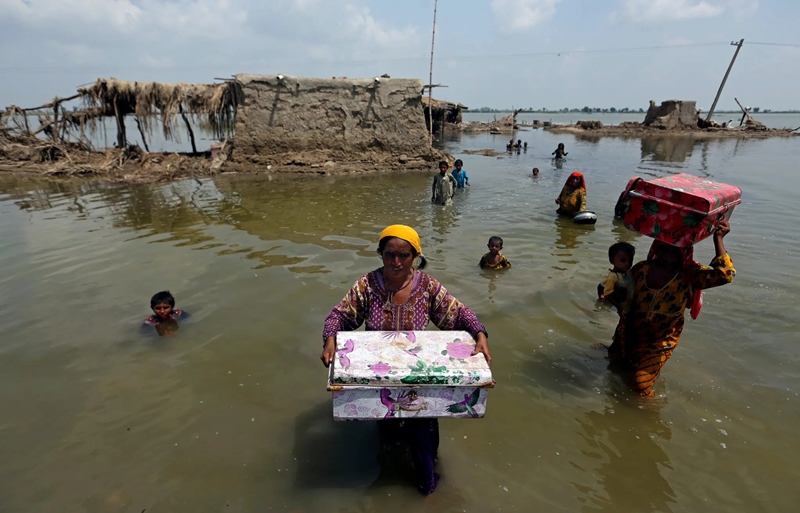
(Source: the New York Times)
Funding is focused on countries that are vulnerable to climate change or need additional support for sustainable development, with priority usually given to Least Developed Countries (LDCs), Small Island Developing States (SIDS), and African countries.
Because these countries need holistic funding to build infrastructure, protect the environment, and reduce greenhouse gas emissions, support is primarily directed to projects to develop renewable energy, restructure industries, and respond to natural disasters caused by climate change.
―
Projects supported by the GCF
―
The main goals of the Green Climate Fund are to "mitigate climate change" and "help people adapt to climate change."
· Climate change mitigation: The Green Climate Fund supports projects that reduce greenhouse gas emissions and mitigate the effects of climate change. This can be done in a variety of ways, such as expanding renewable energy technologies like solar and wind power or developing green transportation systems. It also supports projects that prepare for natural disasters caused by climate change.

· Climate change adaptation: The Green Climate Fund supports climate-related education and infrastructure development in underdeveloped countries and communities to promote sustainable development. It can also fund projects such as sustainable agriculture, waste disposal, and water management.
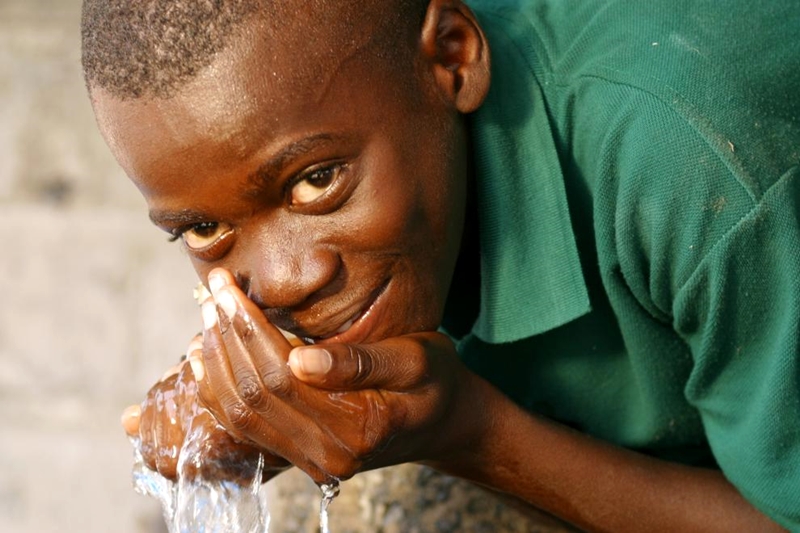
(Source : UNICEF)
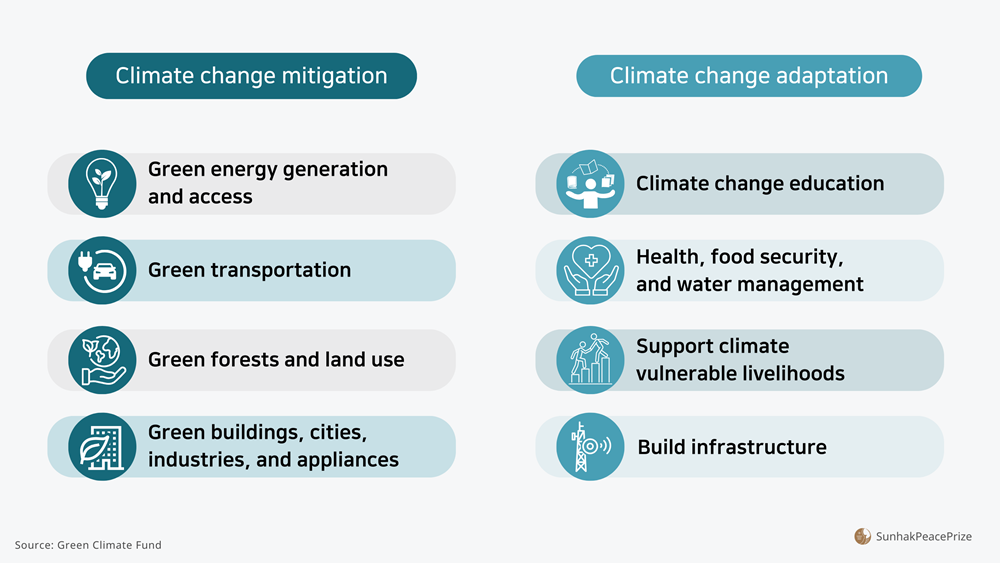
The Green Climate Fund is now in its 13th year, so what are its impacts? Since it began disbursing funds in 2016, $3.6 billion has been committed to 228 projects, and the living conditions of 1 billion people are said to have improved.
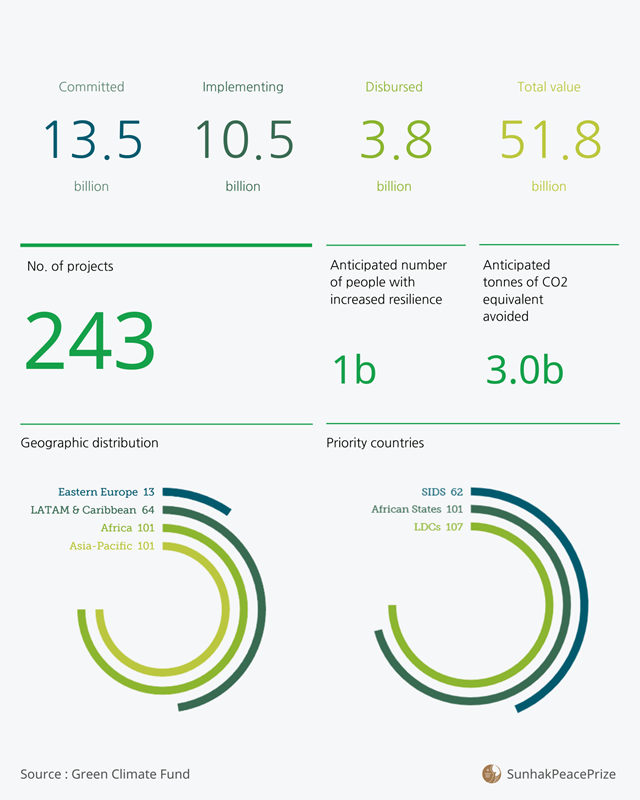
Source: The Green Climate Fund
● Projects for Mitigation
The city of Ulaanbaatar, the capital of Mongolia, has some of the worst air pollution in the world. This problem is caused in part by inefficient cooking and heating devices, as migrants from the countryside travel to the city to escape the ravages of climate change.
In 2018, the GCF disbursed $21.5 million to replace existing heat and cook stoves with safe and efficient alternatives. When the project is completed, it will have averted nearly 470,000 tons of carbon dioxide.
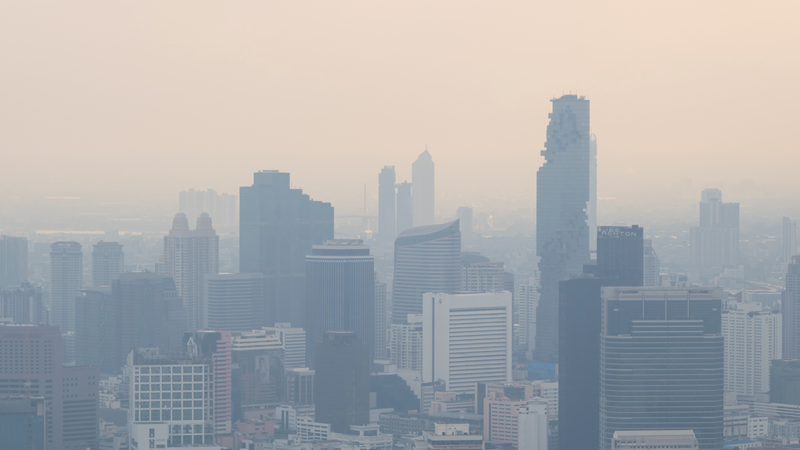
● Projects for Adaptation
Climate change has created a global climate crisis, which include droughts, extreme storms, heat waves, flooding, and many more environmental hazards. In the decades ahead, tens of millions — even hundreds of millions — of people could be displaced by these events.
In particular, thousands of the Pacific Nation Islands could become uninhabitable by 2050, displacing millions of people in the process. In the Marshall Islands, the fund disbursed $25 million, along with financing from the World Bank, to improve coastal infrastructure and develop early warning detection systems to allow people to better prepare for extreme weather events.
Numerous other climate change mitigation and adaptation projects are underway around the world. More data on these projects can be found in the Green Climate Fund Open Data Library.
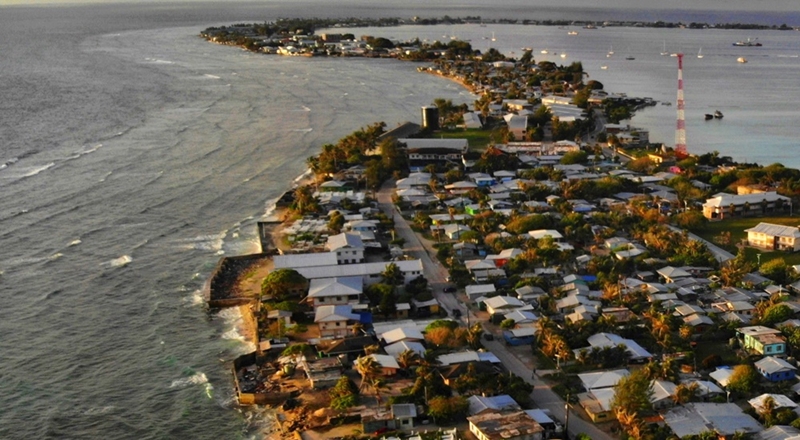
(Source : PINA)
Meanwhile, the 36th GCF Board meeting (July 10th - 13th) adopted a strategic plan for the next four years, including strengthening developing countries' climate response capacities, and approved a total of $760 million in climate project support for 38 countries.
The GCF Board has adopted a strategic plan that outlines its operational direction and priorities for the next four years (2024-2027). Based on the strategy, the organization plans to focus its efforts on implementing four tasks:
△strengthening developing countries' capacity to respond to climate change,
△shifting to a climate-smart development approach,
△enhancing climate resilience, and
△promoting private sector participation.
―
Can the GCF be a model of multilateral cooperation for coexistence?
―
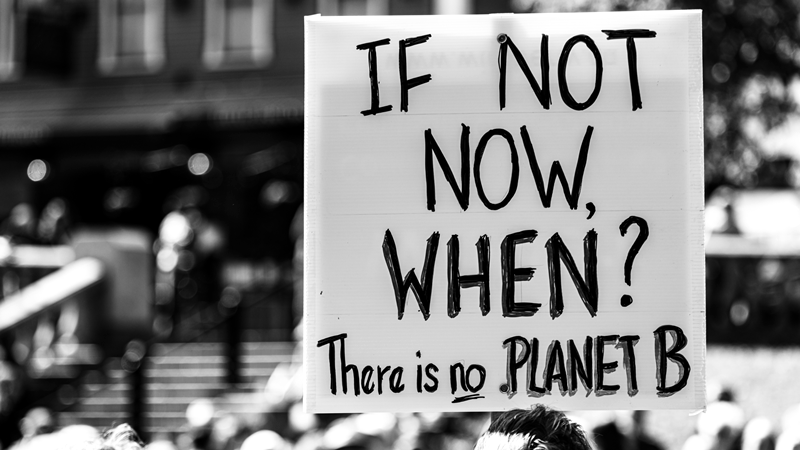
Developing countries have long claimed that industrialized nations, whose wealth has been built on fossil fuels, have an obligation to help them with the climate crisis.
While industrialized nations have already responded to the need to curb carbon emissions by expanding their alternative energy infrastructure, many developing nations, as well as underdeveloped countries, are still stuck in fossil fuel-dependent economies and need more support.
Conflict is inevitable due to the intertwined interests of developed and developing countries, but even as we speak, global temperatures are reaching record highs.
Climate change affects every country and can only be solved through collective action. The only solution to stopping climate change is to dramatically reduce greenhouse gas emissions in all countries.
Even if one country reduces its emissions, the rate of climate change won't slow down if another country increases its emissions, so it's important that all countries help each other reduce their emissions.
The Green Climate Fund was created to achieve this common goal and is showing that multilateral organizations can work.
At a time when multilateralism - the concept of countries working together for a common goal - is at stake, we should all support the Green Climate Fund that is becoming a strong example of nations working together to advance the common good and protect our planet.
“To embrace the future,
we must expand the scope of vocations that can herald the coming of peace.
Even though we may never meet our descendants, we must make sure that all their activities will harmonize in peaceful societies and nations.”
-Dr. Hak Ja Han Moon
Founder of Sunhak Peace Prize-
Learn More: What are Planetary Boundaries?What is Climate Justice? |
Written by Sharon Choi
Director of Planning
Sunhak Peace Prize Secretariat
Translated by Hyang Oh

